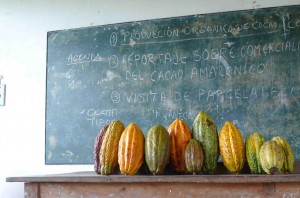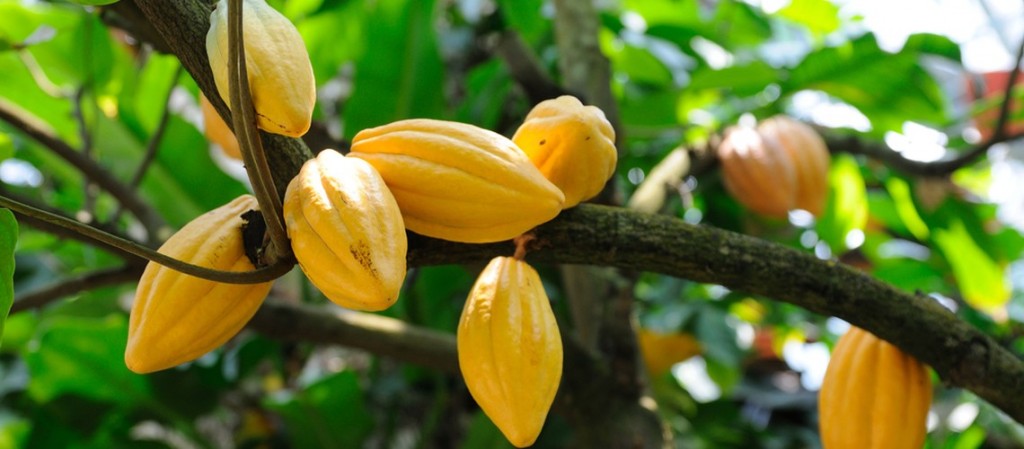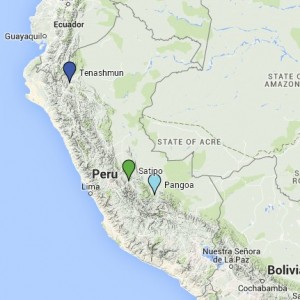We’re honored to have Ignacio Medina as a guest contributor to Canopy Bridge as someone who shares our commitment to the transformative power of food and ingredients and communicates that passion with exceptional clarity and flair. One day in Panama dining at a fine new restaurant, the next giving a conference at a food festival in Santiago. A couple of days back at home, Peru, to cross the desert and teach at Pachacutec -his project together with chef Gaston Acurio – a school for disadvantaged youth, where the best chefs come and teach cuisine as a vehicle for social change. This could be followed by a visit to the Awajun in Peru’s Amazon, and maybe an escape to his native Europe. Always writing and writing about food. Yet, this is no ordinary gastronomy writer: food for Ignacio cannot be conceived without looking at its origins, the community, the land, the producer, the soil. Author of cutting edge books exemplifying this philosophy like Eden.pe and a regular contributor to El País, Ignacio is also the driving force behind numerous projects using sustainable production and high-end gastronomy as the medium to achieve better livelihoods, conservation, and of course, the placer of discovering delicious extraordinary flavors.
Ignacio recently returned from the Peruvian Amazon and shares this story of the indigenous and rainforest origins of cacao.
If the tower of Babel had an agricultural equivalent, it might well be found in the cacao farms of the Peruvian Amazon. Coffee grows above, cloaking the mountain slopes until it reaches about 1000 meters above sea level and then, below, cacao, forming a forest mass. Each tree is different from its neighbor. You can see it in the fruits I find during the lowest season of the year. Some are yellow, others purple, some display every shade of green. They’re longish and rough, rounded and smooth. And nevertheless they have something in common, a thread that weaves throughout this cacao stand and unites each tree: the quality and the origin.
Some of these cacao fruits are very good. We take some and open them, leaving exposed the core of beans covered in whitish, slippery pulp. We tease out the beans, placing them in our mouths and tasting the pulp. Most inspire the same noteworthy sensations: citrus notes, floral tones, sometimes hints of spice, but always a remarkable elegance. Treated well, they’ll produce good chocolate.
The great majority of fruits are from native varieties. This and other parts of the rainforest have traditionally lived in isolation, sometimes due to the drug trade, sometimes because of armed insurgents, sometimes both together. The inhabitants have suffered terrible decades, but the cacao trees remained safe, hidden behind the dark wall of the Amazon. Some of our original cacaos have been in hiding. Precisely near here is the spot of the resurrection of cacao nacional, the great cacao originally from Ecuador, once considered extinct since the 19th Century, re-baptized with the name Fortunato nº 4 (that was, quite precisely, the origin of the new plantings: the fourth tree marked in Fortunato Colala’s farm, there near Jaén). Or chuncho, or the white cacao from Piura…Over the last couple of years other unregistered varieties of native cacao have been appearing, almost always associated with the most isolated indigenous communities: Awajún, Wampis, Lamistas, Ashaninka, Machiguenga and Notmachiguenga.
Today´s producers had lived shut off by the pressures of coca cultivation and the depths of the jungle. So much so, that until only ten years ago many of them didn´t even know of the existence of a market for cacao. The trees survived, simply, because they had always been there.
The farm I visit is an hour´s walk from the edge of the middle reaches of the Marañon River, in lands of the Awajún. The river creates a virtual border. On that side, Imaza, the town with a mix of settlers and indigenous people. On the other, and 15 minutes upstream, Temashnum, a different world.
Here they have a great treasure. Tajimat, a project that works for the development of this and other Awajún communities, is analyzing every variety of cacao cultivated in these plots. It may be that one of them warrants grafting onto other stock to get a more consistent and high quality plantation. Cacao is seen as an instrument for the development and growth of the Awajún.
 Variety of cacao cultivated by Awajún people. Photo by Ignacio Medina.
Variety of cacao cultivated by Awajún people. Photo by Ignacio Medina.
The Awajún live in balance with nature. They did so before the pressures of Western civilization, when they lived from hunting, fishing and gathering, and they do so now, in the midst of a shift to farming. The Awajún are living a complicated transition to modernity. Once a hunting and fishing people, they´ve lost control of their natural resources. There´s nothing to hunt within three-days´ walk of Tenashmun and the Marañon flows by, ever more depleted, nearly converted in a gigantic sewer. Cacao and bananas in place of the giant paiche fish, armadillos, wild peccaries, agoutis and deer. Nowadays they concentrate their efforts on a tree that they paid little attention to before: cacao. They are following a hard and complex road promoted by the younger generation and supported by their elders. You can see it in their community assemblies: young apus leading the community, and elders in the front rows endorsing their efforts.
A society that lives in near absolute symbiosis with nature can only farm organically, with the greatest respect for their living environment and way of life. For their lands, the sustainable cultivation of cacao is the key to survival.
Almost everything could have changed with the arrival of programs to abandon coca cultivation, but this help rarely reached their lands. In the end, this turned out to be a blessing in a world where, though no one knew it until just a few years ago, it’s been important to stay clear of CCN 51, the rival of the native cacaos, slipping into the Amazon through the back door. So it was in Wawas. Also an Awajún community but they chose the easier road: In the world of cacao, that shortcut is called CCN 51. More productive, but less valued; more profitable in the short term, more resistant to disease, and also more demanding and aggressive with the soil, which ends up depleted. And its chocolate? Nothing that stands out.
The Awajún are a proud and serene people. I think they have every reason to be so. They are also protective of their privacy and wary of strangers, but when they accept you they are hospitable and close. Our visit was authorized a couple of hours ago by around fifty members of the community, gathered in the same hall. We now tell them who we are, what we do. We explain our purpose and they tell us what they expect of us, and seal the meeting with a pot of masato (a fermented cassava drink). With the meal they serve aguajina, another fermented drink which ends up leaving our heads spinning.
The scene is slightly different in the home of the Notmachigenga, who inhabit most of the twenty six indigenous communities along the course of the Sonomo River (in Pango, Junin). In San Antonio de Sonomoro, cacao opens the doors to prosperity. Carefully tended crops, a drying area, brand-new fermentation boxes and training provided by a Peruvian buyer interested in the value added – in contents and significance – by these people to their cacao. Not far away, in Cubantia, another of the many realities of cacao in the Amazon: while in plain sight of the community, cacao is still struggling for attention, even from the farmers growing it. Pruning has to improve, and they still need to select varieties and care for the health of their farms before they even begin the steps after harvest: drying, fermentation…
Themashnum, Satipo and Pagoathey have the keys that open two doors to the Amazon: one that leads to prosperity, drawing on farming crops like cacao, coffee and banana in ways that respect the local environment, and one that threatens to sink them in the bottomless well of deforestation.
For the Spanish version of this article click here
Follow Ignacio Medina on Twitter @Igmedna




5 thoughts on “Cacao and the life of the rainforest”